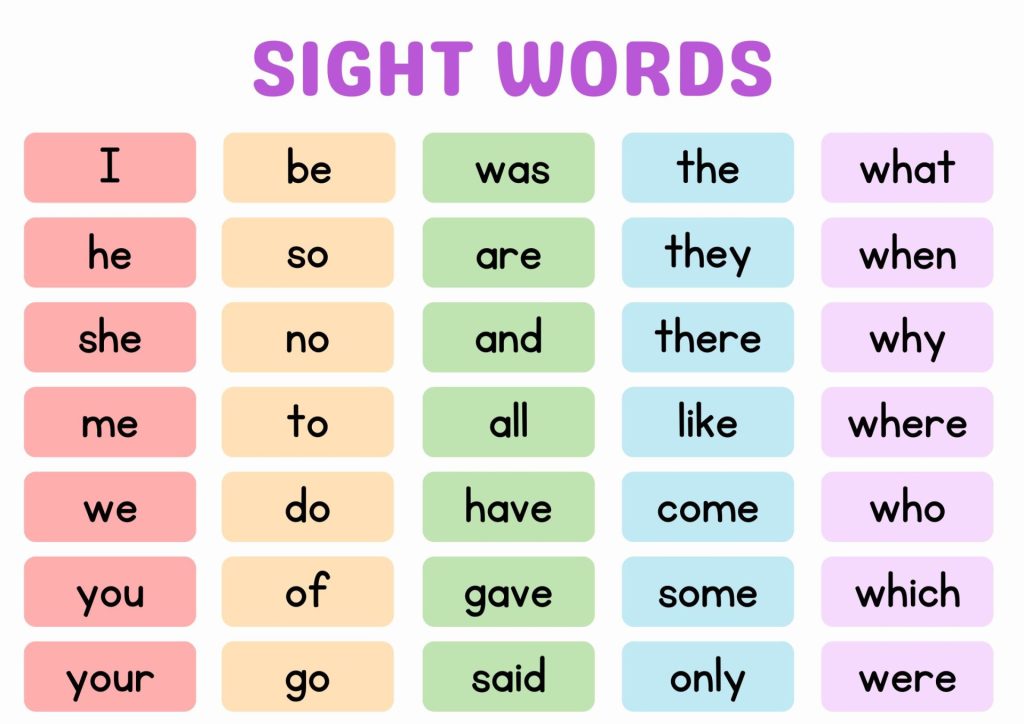Understanding the Significance of Sight Words in Early Education
Table of Contents
Introduction
Sight Words
Sight words, also known as high-frequency words, are an integral component of early literacy education. Let’s delve into the realm of sight words and explore their significance in fostering reading proficiency among young learners.
Analogy of Definition
What are Sight Words?
Sight words encompass commonly used words that are essential for young readers to recognize instantly, as they frequently appear in written texts. These words form the building blocks of reading and are fundamental for developing reading fluency and comprehension.
Method
Teaching Kindergarten Sight Words
Educators employ various methods to introduce and reinforce kindergarten sight words, including interactive activities, repetitive exposure, and personalized learning approaches tailored to the needs of individual students.

You can find more activities and resources with ChimpVine.
Examples
Example 1: The sight words ‘the’, ‘and’, ‘is’, ‘to’, and ‘in’ are commonly introduced to kindergarten students to build a strong foundation for reading.
Example 2: Kindergarten sight words such as ‘my’, ‘on’, ‘it’, ‘you’, and ‘for’ are frequently integrated into early literacy activities to enhance reading proficiency.
Example 3: ‘See’, ‘can’, ‘we’, ‘at’, and ‘am’ are among the sight words that kindergarten students are encouraged to recognize and memorize to facilitate their reading development.
The examples illustrate the significance of introducing kindergarten sight words to young learners, emphasizing the importance of these foundational words in developing early literacy skills. By familiarizing students with common sight words, educators lay the groundwork for enhancing reading fluency and comprehension, setting the stage for a lifelong love of reading.
Quiz
Tips and Tricks
1. Flashcard Fun
Tip: Create personalized sight word flashcards for kindergarten students to practice and reinforce word recognition.
2. Sight Word Scavenger Hunt
Tip: Organize a fun scavenger hunt activity where students search for sight words in the classroom environment, promoting interactive learning.
3. Storytime Sight Words
Tip: Integrate sight words into storytelling sessions to engage students and reinforce word recognition in a meaningful context.
4. Sight Word Bingo
Tip: Play sight word bingo to make learning sight words an enjoyable and interactive experience for kindergarten students.
5. Sight Word Writing Practice
Tip: Encourage students to practice writing sight words in a variety of creative ways, such as using chalk, paint, or sand, to enhance retention and recognition.
Real life application
Story: The Magical Sight Word Adventure
Join Lily and Max on a magical adventure where they embark on a quest to unlock the power of sight words and overcome challenges along the way.
Challenge 1: The Enchanted Forest
Lily and Max encounter an enchanted forest filled with hidden sight words. By recognizing and reading the sight words, they unlock the path to the next stage of their journey.
Challenge 2: The Tower of Words
As they ascend the tower, Lily and Max encounter sight word puzzles that they must solve to progress. By applying their knowledge of sight words, they conquer each challenge and ascend to new heights.
Challenge 3: The Book of Secrets
In the final challenge, Lily and Max discover a book of secrets that can only be unlocked by reading and comprehending a series of sight words. By mastering the sight words, they unveil the secrets and complete their magical adventure.
FAQ's
Like? Share it with your friends
